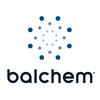
Content sponsored by:
Balchem Animal Nutrition
Continuous abomasal infusion of 15N-Lys to determine metabolizable Lys supply and Lys utilization for milk protein synthesis in dairy cows
Published: August 9, 2024
Source : J. Kim 1,2; H. Hu 1; K. Park 1,2; and C. Lee 1 / 1 Department of Animal Sciences, The Ohio State University, Wooster, OH; 2 Interdisciplinary Nutrition Program, Department of Animal Sciences, The Ohio State University, Wooster, OH.
Amino acids (AA) undergo complex metabolism for protein synthesis or excretion after oxidation. We investigated the fate of metabolizable Lys via continuous abomasal infusion of 15N-Lys. Four rumen-cannulated Holstein cows (147.0 ± 63.2 d in milk, 49.4 ± 9.5 kg milk yield) received 0.6 g/d of 15N-Lys into the abomasum for 5 d. Cows were offered a common diet (16.6% crude protein; 89% of metabolizable Lys requirement) once daily for an ad libitum intake. Total feces, urine, and milk were collected 1 d before the infusion and for 5 d during the infusion. All samples collected were analyzed for total N and 15N (atom percent excess) for the mass balance of 15N. Milk samples were determined for 15N enrichment of milk protein AA. Total Lys absorbed was estimated by NASEM (2021) and calculated using 15N enrichment of milk Lys and 15N absorbed (infused – total 15N excreted in feces) assuming that net utilization of absorbed Lys by peripheral tissues other than mammary tissues is zero. The statistical analysis was conducted using the Mixed procedure of SAS with a random effect of cow. On d 5, 15N excretion in feces was 19.8% of 15N infused, and 15N secretion in milk and excretion in urine were 33.2 and 13.5% of 15N absorbed, respectively, indicating that 53.3% of absorbed 15N was retained. Total Lys absorption calculated using 15N of milk Lys was not different (200 vs. 183 g/d, SEM = 17.7, P = 0.41) from that estimated by NASEM (2021). 15N enrichment was observed in various milk protein AA except Ile, Thr, Pro, Phe, and Tyr+His. Milk Leu and Met tended to be enriched with 15N (P < 0.10). The distribution of 15N among milk AA was determined. Milk AA with the largest 15N enrichment was Lys (76.3 ± 3.2% of total 15N in milk AA) followed by Glx (10.8 ± 1.4%), Asx (4.3 ± 0.5%), Ser (2.2 ± 0.3%), Ala (1.9 ± 0.4%), Val (1.8 ± 0.5%), Leu (1.5 ± 0.3%), Gly (0.8 ± 0.2%), and Met (0.4 ± 0.1%). The results showed potential use of 15N for AA metabolism and confirmed the flexibility of mammary tissues in producing other AA from Lys to synthesize milk protein.
Key Words: milk amino acids, stable isotope, 15N enrichment.
Related topics:
Recommend
Comment
Share

Would you like to discuss another topic? Create a new post to engage with experts in the community.



